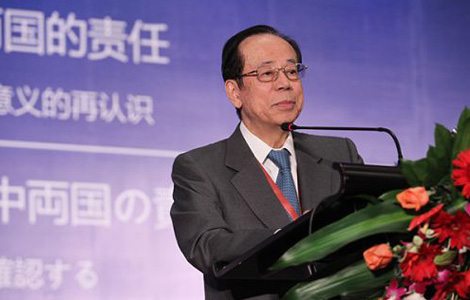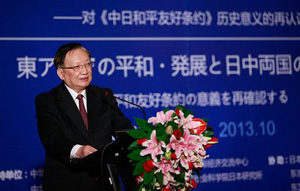Ulterior motive behind GSI distortion
Updated: 2013-10-28 07:03
By Mo Cha (China Daily USA)
|
||||||||
How does one describe slavery in these modern times? The Global Slavery Index, a report by the Walk Free Foundation, says slavery includes forced and bonded labor, human trafficking, forced marriages and the use of children in the military. Including these, the Foundation, which claims to include data from 162 countries in its index, says that India has by far the highest number of slaves (nearly 14 million), followed by China (2.9 million) and Pakistan (2.1 million).
Undoubtedly, there is a lot to be desired when it comes to the working and living conditions of workers in many countries, including the developed ones. But it is wide of the mark to describe those who work extra long hours for extra money or in bad conditions as slaves.
A slave is defined as the property of another person and slavery refers to the condition of being a slave.
The Foundation's all-encompassing definition of slavery merely serves to smear the image of developing countries and does little to help prevent the evils of human trafficking and slavery.
Before condemning a practice or cultural tradition as a form of slavery, we have to take into consideration the political, social and economic development levels of the society they are practiced in.
Traditional customs play an important role in a society that may appear antediluvian, even cruel, to observers from the more "advanced world". Arranged, and, at times, forced marriages of women in India is one such custom. Not many people outside India, Pakistan, Bangladesh and, of course, the Middle East, know, let alone practice, this custom. But parents arranging the marriages believe the practice to be in the best interests of their daughters. In other words, they fail, or rather refuse, to see the other side of the coin.
There is no denying that the world is far from an ideal place to live in. It is full of people and enterprises eager to extract the last bit of profit from other people and the Earth. Such practices have been stamped with the official government seal in many countries, and globalization has made this process even easier.
Globalization has extended big businesses' arm of exploitation, which forces people to work in dark, dingy, decrepit factories run by despotic business people mostly in developing countries. Perhaps China has the highest number of workshops, from where Chinese and overseas companies get products, both high end and middle class.
But does that mean most of the factories and workshops in China are like the arenas in which slave warriors were pitted against mighty Roman gladiators? Of course not. China, like India, is still a developing country. And although it has galloped ahead of almost all the other developing countries in terms of economic development, it still has a few workshops and factories where wages and working conditions may not be ideal. Then there are certain other sections of the economy where people work extra hours in exchange for that extra bit of money that might "guarantee" a better future.
But that does not mean that workers are treated like slaves. They may have been deprived of part of their fundamental rights, but so are many workers in the United States. Many Hispanic immigrants in the US, especially those without papers, are forced to work for less than the minimum wage just to survive.
This is to say that what appears as "slavery" to the "enlightened" eyes of a Westerner may be a struggle for survival of a person, and it is those companies higher up the value chain that need to ensure their workers are treated fairly. So instead of pointing fingers at each other, the world should sit down to find ways to end this worst of human maladies.
The author is a Beijing-based observer of international affairs.
(China Daily USA10/28/2013 page11)

 Serena beats Li Na for WTA title
Serena beats Li Na for WTA title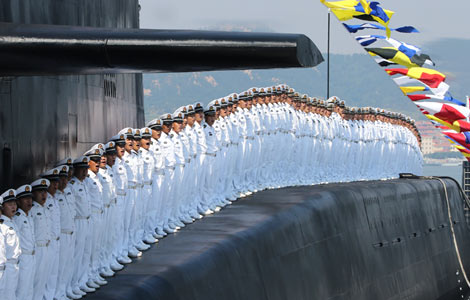
 Nuclear submarine fleet comes of age
Nuclear submarine fleet comes of age
 5 pharmacies begin to sell baby formula
5 pharmacies begin to sell baby formula
 The suave style of America's dapper dynasty has arrived
The suave style of America's dapper dynasty has arrived Mother and four children stabbed to death in New York
Mother and four children stabbed to death in New York
 China Fashion Week S/S 2014: day 2
China Fashion Week S/S 2014: day 2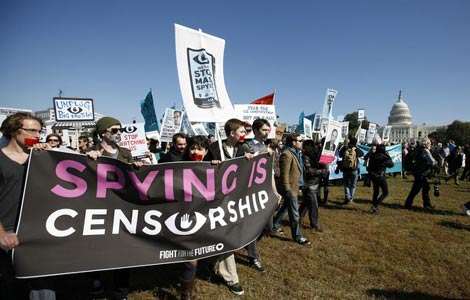
 Demonstrators protest against govt surveillance in US
Demonstrators protest against govt surveillance in US
 Where art thou, my love?
Where art thou, my love?
Most Viewed
Editor's Picks
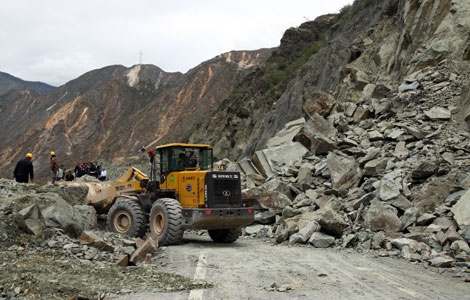
|

|

|
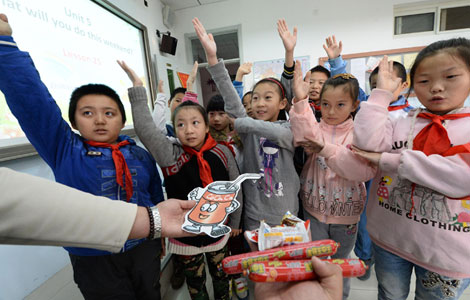
|

|

|
Today's Top News
3 die after vehicle goes into crowd in front of Tian'anmen
NQ Mobile hits back after US stock plunge
Obama aware of spying on Merkel: German paper
Cousin killed mom, 4 kids
High speed versus history
States gear up for symposium
Film finds a hip-hop-tai chi connection
Study shows PM1 most harmful
US Weekly

|

|
